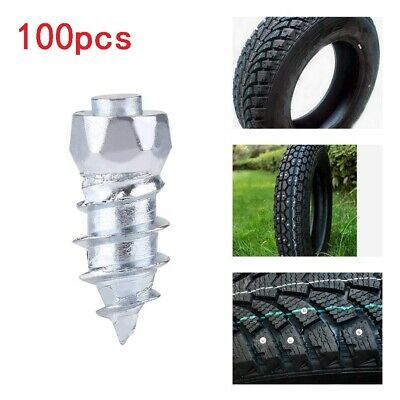I noticed that the wheel studs on my tires are rusty. However, I’m trying to cut costs and do the replacement myself. What is the average cost to replace the wheel studs on my car?
Annette Maxon · Answered on Apr 27, 2022
Reviewed by Shannon Martin, Licensed Insurance Agent.
Sorry to hear that you found a rusty wheel stud!
On average, new wheel lug studs cost $4 to $12. This cost does not include labor (which would likely set you back *$61 to $77).
If only one stud is missing or damaged, you can drive it safely when traveling a short distance to a repair shop or auto parts dealer. But for the most part, it’s best to keep your car parked until the replacement has been made.
While you’ll have to spend a bit to get this part replaced, you can cut costs elsewhere by looking over your car insurance policy.
That’s what Jerry is here for—a licensed broker that offers end-to-end support, this super app gathers affordable quotes, helps you switch plans, and can even help you cancel your old policy!
MORE: 11 car insurance hacks to save you money
Car MaintenanceCar Tires
WHY YOU CAN TRUST JERRY
Jerry partners with more than 50 insurance companies, but our content is independently researched, written, and fact-checked by our team of editors and agents. We aren’t paid for reviews or other content.
Browse More Content
Radiator Flush
Oxygen Sensor Replacement Cost
Intake Manifold Runner Control Replacement
What To Do If Your Fog or Driving Lights Are Not Working
High Engine Idle Speed Inspection
Lexus Nx 300 Insurance Cost
Ford Escape Titanium Insurance Cost
Jeep Patriot Sport Insurance Cost
Geo Prizm Lsi Insurance Cost
Volkswagen New Beetle Gls Insurance Cost
Cheap Car Insurance in Nevada
Cheap Car Insurance in Michigan
Cheap Car Insurance in Rhode Island
Cheap Car Insurance in South Carolina
Cheap Car Insurance in New York
I love the Dodge Challenger and I found a gorgeous 2012 model online for what seems to be a reasonable price. How much does a 2012 Challenger usually go for?
How much does a 2012 Challenger usually go for?
Andrea Barrett
Apr 27, 2022
It’s been a while since I’ve gotten a new car, so it’s my first time using a key fob. I’m worried that something is up with its battery, so I want to open it up and look inside. Can you tell me how to open a Dodge key fob?
Natalie Todoroff
Apr 27, 2022
I bought a used car with a bunch of bumper stickers that, to sum it up shortly, don’t really suit me. Will Goo Gone hurt car paint if I try using it to remove these bumper stickers?
Melanie Mergen
Apr 27, 2022
Browse All Questions
Make your drive to Maryland a painless one by mapping your route, planning for traffic, and learning about some of the state’s road laws.
Zachary Morgan
Apr 26, 2022
From top 40 hits to talk radio, we’ve got all the info regarding the very best radio stations in Wausau.
Zachary Morgan
Apr 26, 2022
Total Fire Protection offers a wide range of services including 24/7 emergency service, fire training, and systems installation, repairs, and maintenance.
Zachary Morgan
Apr 26, 2022
Elephant Insurance
Land Rover
New drivers
Ferrari
Infiniti
Foreign
Renter insurance
Jaguar
Veterans
Holidays
Alabama
Pennsylvania
Umbrella Insurance
Bentley
Volkswagen
Cancellation Policy
Lamborghini
Oregon
Maryland
Hawaii
Subrogation
Gross Vehicle Weight Rating
Movies
Hummer
No long forms
No spam or unwanted phone calls
Quotes from top insurance companies
Find insurance savings — it's 100% free
Car Insurance
Cheap Car Insurance
Car Insurance Quotes Online
Types of Insurance
Toyota
Hyundai
Mercedes-Benz
Subaru
Chevrolet
Mitsubishi
ALAKAZARCACOCTDEFLGAHIIDILINIAKSKYLAMEMDMAMIMNMSMOMTNENVNHNJNMNYNCNDOHOKORPARISCSDTNTXUTVTVAWAWVWIWY
Wheel studs, sometimes confused with lug nuts, are bolts that allow the lug nut to secure the wheels onto the hub.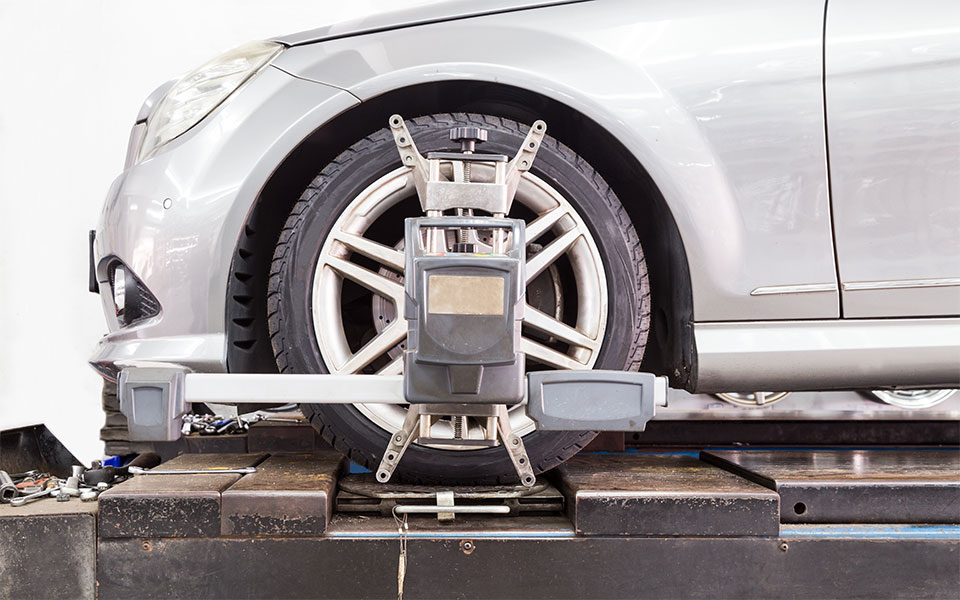 It’s dangerous to drive with a damaged wheel stud, so it’s important to have it replaced right away.
It’s dangerous to drive with a damaged wheel stud, so it’s important to have it replaced right away.
It typically costs between $75 and $250 to replace wheel studs. The cost primarily depends on your vehicle make and model and where you take it for the work.
A luxury vehicle like a BMW may cost around $200, while a more common vehicle may cost closer to $80.
Quick Navigation
Wheel studs themselves are not very expensive, but having one (or all) of them replaced on your vehicle can cause the price to go up significantly.
Like most vehicle repairs, the make and model is the biggest factor in estimating the price to replace the wheel studs.
Where you take it for the work will also have a significant impact, since most of the cost is related to labor.
Taking your vehicle to a dealership is almost always more expensive than taking it to a local garage or chain repair shop. If your vehicle needs other repair work done, that will also push the price up higher.
Cost Estimate for Replacing Wheel Studs
| Minimum Cost Estimate | $60-$75 |
|---|---|
| Maximum Cost Estimate | $220-$250 |
| Average Cost Estimate | $79-$115 |
The parts to replace wheel studs are typically inexpensive. On carparts.com, you can find single studs priced at around $5 or $6.
On carparts.com, you can find single studs priced at around $5 or $6.
They’re also sold in packs of 10, which are priced anywhere from $18 to $40. At a retailer like Advance Auto Parts, you can find replacement wheel studs for as cheap as $2 or $3.
If you’re going to do the work yourself, you’ll need a lug wrench and a tire rod end remover. You can purchase these tools for a reasonable price or you can even rent a tire rod end remover from some auto parts stores.
If you don’t have a lug wrench, you can use a socket and ratchet set.
You can purchase a lug wrench for $25 or less. The tire rod end remover may cost anywhere from $17 – $30. If you don’t already own a socket and ratchet set, you can usually buy one for under $30.
All in all, you can buy all the parts you need for this project for around $50 or less. Of course, the cost of the parts from a garage will vary. However, it should be much less since they won’t be charging you to purchase the tools.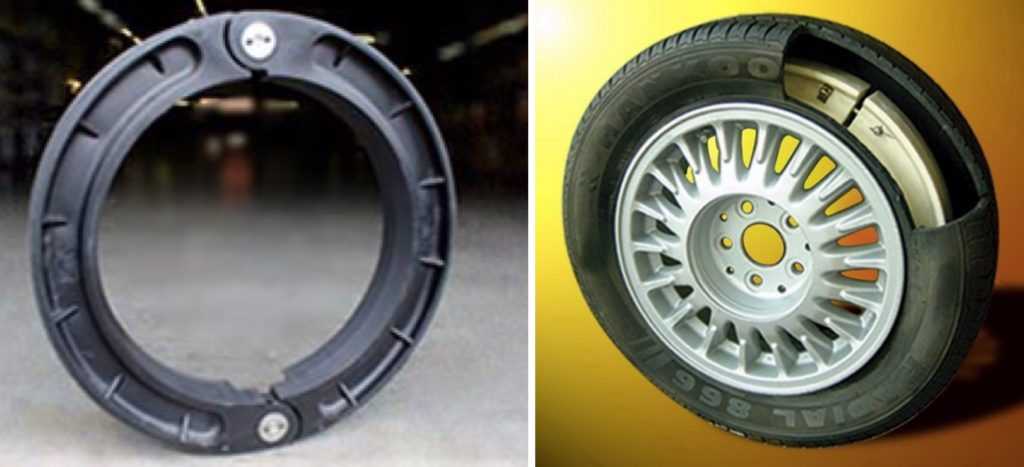
It’s also a good idea to purchase new lug nuts for each stud that you replace. Often the process of installing the new wheel stud will cause damage to the lug nut.
Labor Costs for Replacing Wheel StudsThe labor to replace wheel studs is minimal and can usually be done in under an hour. However, the labor costs can vary quite a bit based on where you take the car to do the work.
If you’re already having tires replaced or other repairs are done on your vehicle, you can probably add on the wheel stud replacement without increasing the labor costs too much.
The cost will mainly be determined by the garage’s hourly rate. If you take the car to a chain repair shop or tire shop, it will probably be far cheaper than taking it to a dealership. On the other hand, you may find a better deal at a local garage.
Wheel Stud Replacement Labor Cost Estimate| Minimum Labor Cost | $40-$60 |
|---|---|
| Maximum Labor Cost | $100-$125 |
| Average Labor Cost | $60-$90 |
On average, mechanics charge between $80 and $100 per hour for labor.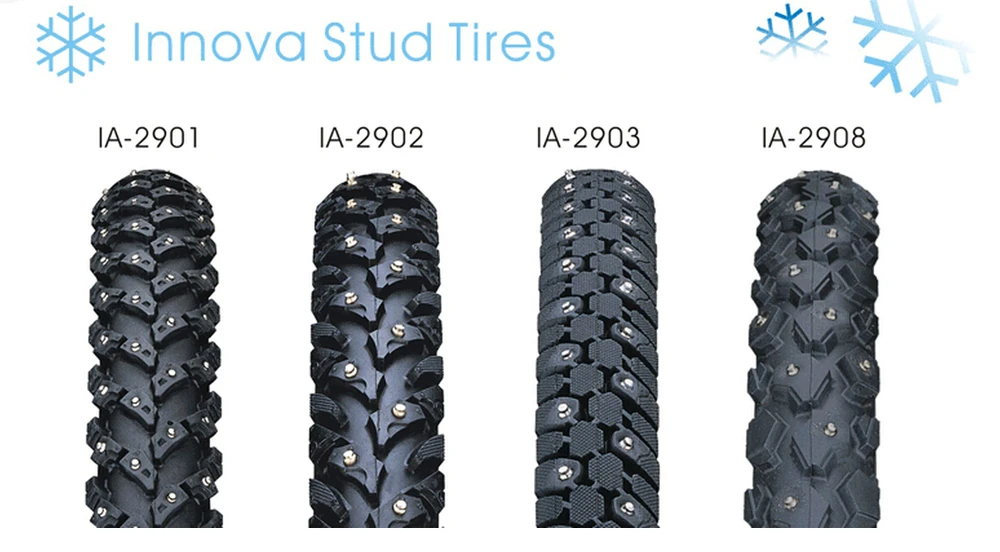 Since this job probably only takes about 30-45 minutes, you should expect to pay under $100 for labor.
Since this job probably only takes about 30-45 minutes, you should expect to pay under $100 for labor.
Most people will pay between $60 and $90 for labor to replace wheel studs.
If you take it to the dealership, you can expect the price estimate to go up by about $15-$25 per hour. So, it may cost anywhere from $95-$125 for one hour of labor.
Dealerships typically charge a full hour even if the job only took 30 minutes, so you should expect to pay the standard hourly rate.
When to Replace Wheel StudsWheel studs need to be replaced if they become damaged, break, or rust. If you get custom wheels for your vehicle, you may need longer wheel studs.
Despite the fact that they’re built to last for the lifetime of your vehicle, it’s a fairly common issue for wheel studs to break. Typically this occurs due to over-tightening of the lug nuts, rust damage, or even vandalism.
A very common problem is stripping the threads on the wheel studs while changing a tire. A wheel stud will almost never “randomly” break off without cause.
A wheel stud will almost never “randomly” break off without cause.
Certain weather and environmental conditions might make stud damage more likely.
For example, in areas where the roads freeze and salt are applied to the roadways, the studs may become rusted and break more easily.
Or, if you live in an area where the roads are especially rough, it may cause other issues with your wheels and suspension that could contribute to problems related to your wheel studs.
When your wheel studs are damaged and need to be replaced, you may notice some of the following signs and symptoms:
If you see these signs, it’s important to have the issue taken care of as soon as possible, or you could be creating a potentially dangerous situation for your vehicle.
Most often, broken wheel studs are due to human error. These parts are meant to last, and it takes a lot to break them. The good news is that damage to your wheel studs is largely preventable.
Here are some of the most common reasons for wheel studs to break and how to prevent it:
Improper torquing of lug nutsLug nuts need the appropriate amount of torque applied equally across all four wheels. When lug nuts are under torqued, they may get loose and fall off.
Even if they stay on, the gap between where they should be tightened to and where they are will eventually damage the threads on the wheel stud. When they’re over-torqued, the stud may break from the excessive pressure.
Loss of clamp forceIf rust or dirt is present when mounting tires on the rim, it may lead to corrosion on the rim, rotor, or brake drum. Over time, this can allow for movement between the rim and rotor, which can eventually fracture the wheel stud.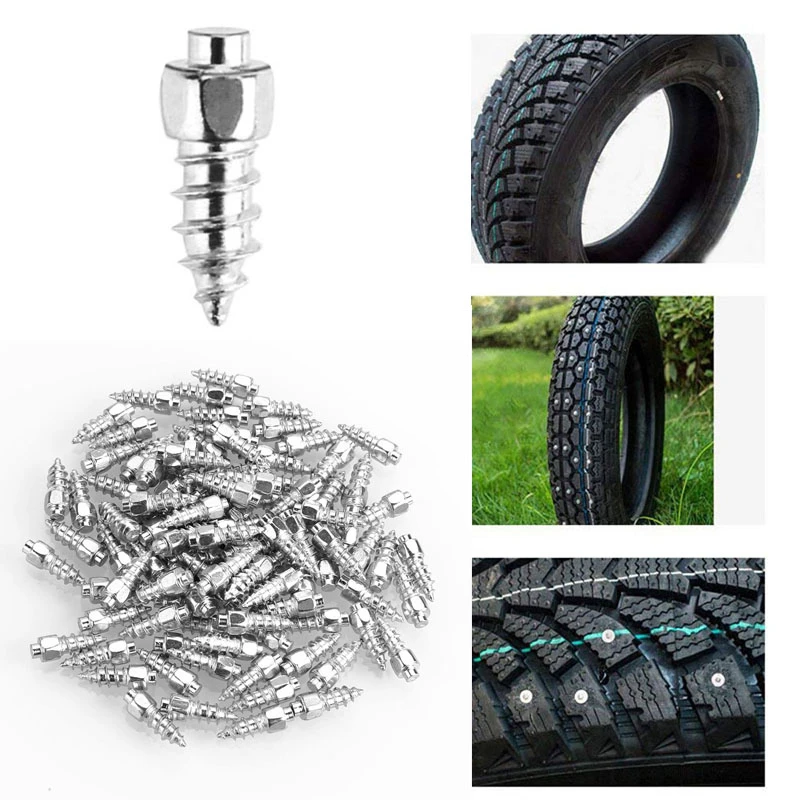
Lug nuts should be hand-threaded onto the stud and rotated at least four times to ensure that they’re installed properly on the studs.
If you change your own tire (or sometimes even if a professional changes it for you), it’s easy to simply tighten the lug nuts back onto the wheel without completing this step. Installing the lug nuts correctly and also tightening them in a star pattern will help prevent damage to the stud threads.
Cross threading lug nuts onto wheel studsUsing an impact wrench on the incorrect setting or getting in too much of a hurry can cause this problem. It’s important to slowly guide the lug nut onto the stud.
Rust damageIf you live in an area where the roads are salted during winter, your wheel studs will be more at risk for rust damage. When the studs get rusted, it can be very difficult to remove lug nuts or place them correctly without further damaging or breaking the wheel studs.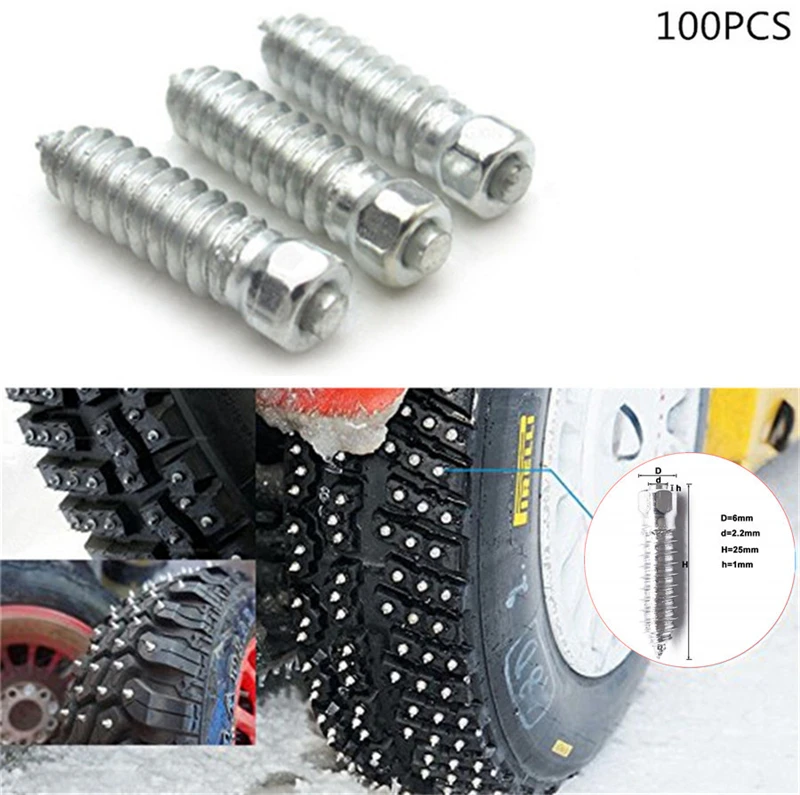
If you live in an area where salt is commonly applied to the roadways, you should check for rust annually. If you see signs of rust on your wheel studs, you will want to replace them before they fail.
Replacing wheel studs is something that most people will never have to think about when it comes to maintaining their vehicle. However, if it becomes necessary, it’s not something that you should ignore.
Damaged or broken wheel studs can create a dangerous situation, so they should be replaced as soon as possible.
The good news is that replacing wheel studs is a fairly inexpensive repair. You may be able to do it yourself, but if you take it to a shop, it will most likely cost you between $79 and $115, depending on how long the job takes and how much the labor charges are.
The parts for the job are very inexpensive, with studs for most vehicles costing only a few dollars.
You may be able to find a better deal on the repair by shopping around and getting a few quotes.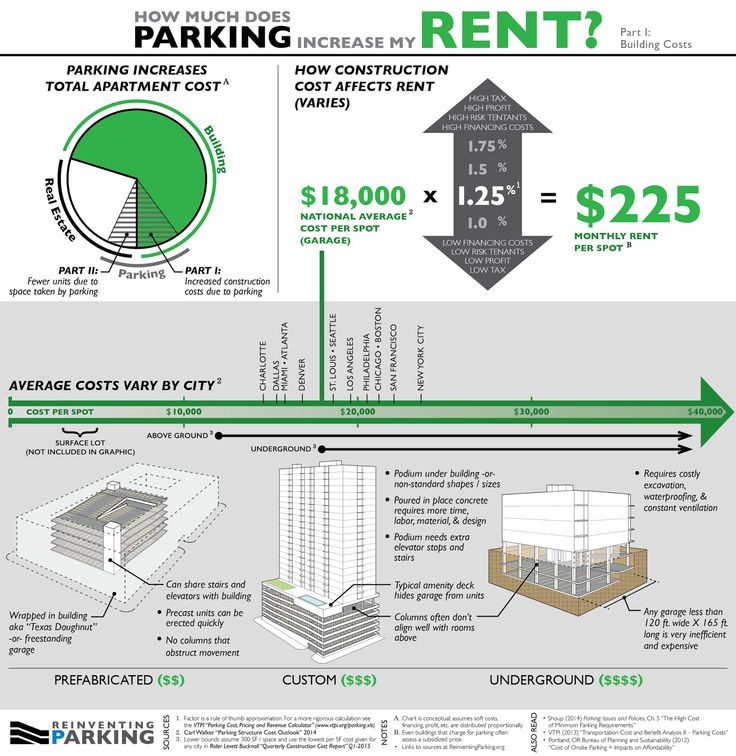 Remember, a dealership will likely be the most expensive place to go.
Remember, a dealership will likely be the most expensive place to go.
Any tire shop or chain repair shop should be able to do the work quickly and easily.
What are spikes and why are they needed?
Purpose of studs on winter tires
How many studs are on winter tires from different manufacturers?
How many studs are on winter tires of different sizes?
Conclusion
When choosing winter tires for the next year, drivers actively study ratings, expert reviews, reviews of other motorists. In each of these materials, you can find divisions into studded and non-studded tires. In the first case, special attention is paid to the wear resistance of metal inserts. To make it easier to choose the right tires and control the level of durability, attentive drivers sometimes ask themselves the question: “How many studs are on winter tires, and what does this parameter affect?”.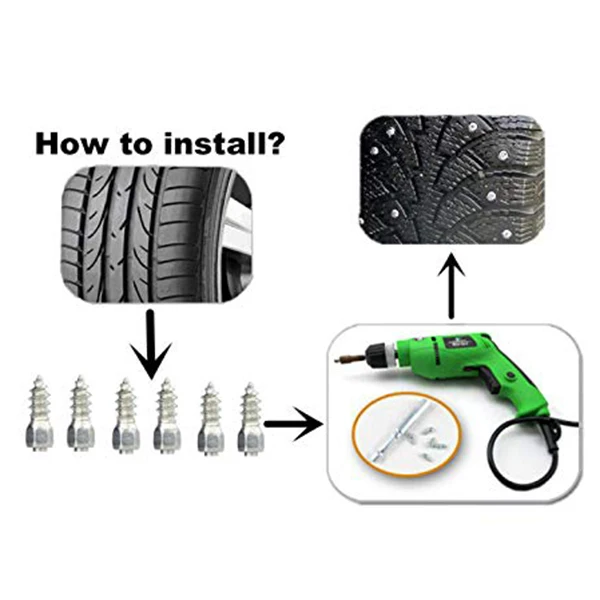 In this article we will try to understand the features of modern studding, but it is worth mentioning right away that the exact number of inserts depends on the manufacturer and the specific model.
In this article we will try to understand the features of modern studding, but it is worth mentioning right away that the exact number of inserts depends on the manufacturer and the specific model.
Studs are found exclusively on winter tires and are not allowed for use in every region. Metal inserts can spoil the road surface, and therefore in countries with warm winters they are completely banned.
The spike is a two-piece metal element.
The core of the inclusion or the so-called body. This is the part of the stud that is visible when visually inspecting the tires. The rod is responsible for holding the metal structure in winter tires. This part of the stud is made of light alloy and may have additional serrations that reduce the risk of flying out.
The core of the spike. This bulging part is of the greatest importance, as it provides traction on ice and packed snow.
Winter tire manufacturers are redesigning the carbide insert and body to provide better wear and grip.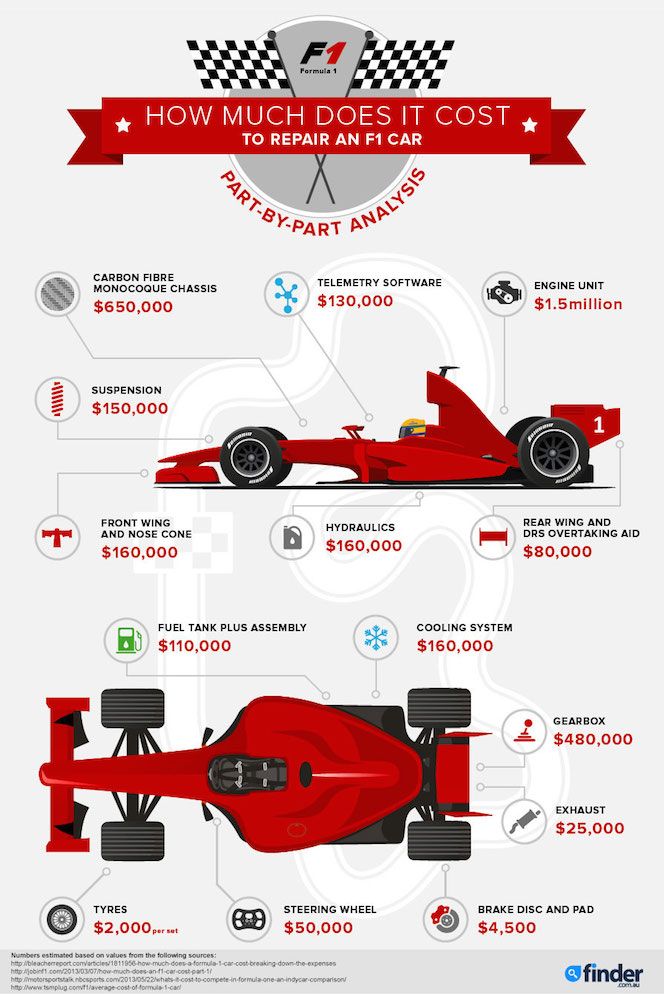 However, the weight of the spike is limited. In Russia, this parameter should not exceed 1.6 g. For tires manufactured in Finland, there is a stricter limit - 1.1 g.
However, the weight of the spike is limited. In Russia, this parameter should not exceed 1.6 g. For tires manufactured in Finland, there is a stricter limit - 1.1 g.
The tasks of tires used in winter are reduced to the need to cope with snow porridge and mud, provide cross-country ability in deep snow and efficient braking, fast acceleration on ice. To perform the latter function, spikes are used. They work on ice and packed snow, literally biting into the surface.
Obviously, the greater the number of metal inserts in studded tires, the more effective braking and acceleration. However, with the use of new technologies, some manufacturers have managed to achieve good performance with a small number of studs. The car is confidently controlled on a slippery road due to sipes and grip blocks on tires, an improved rubber compound.
As mentioned above, the number of metal inserts is regulated in different countries in their own way. The inclusion of studs in the design of the tire is only allowed in the Scandinavian and European countries. Asian regions do not welcome the use of metal hooks, but some manufacturers from Japan, Korea and China make similar models for import to countries with a cold climate. A striking example of such brands is Bridgestone, Yokohama. In various models from Asian plants, a large number of spikes cannot be seen. As a rule, the number of metal inserts does not exceed 130 pieces per tire.
The inclusion of studs in the design of the tire is only allowed in the Scandinavian and European countries. Asian regions do not welcome the use of metal hooks, but some manufacturers from Japan, Korea and China make similar models for import to countries with a cold climate. A striking example of such brands is Bridgestone, Yokohama. In various models from Asian plants, a large number of spikes cannot be seen. As a rule, the number of metal inserts does not exceed 130 pieces per tire.
In the Scandinavian countries since 2009 there has been a regulation prohibiting the installation of spikes in quantities of more than 50 pieces per linear meter. However, this regulation has a caveat. A manufacturer can make more studs on their tires if they can prove that it does not harm asphalt and other road surfaces. Finnish brands hold the record for the number of holds. In some models, their number can reach 180 units.
Domestic manufacturers have no restrictions on the number of studs on tires produced.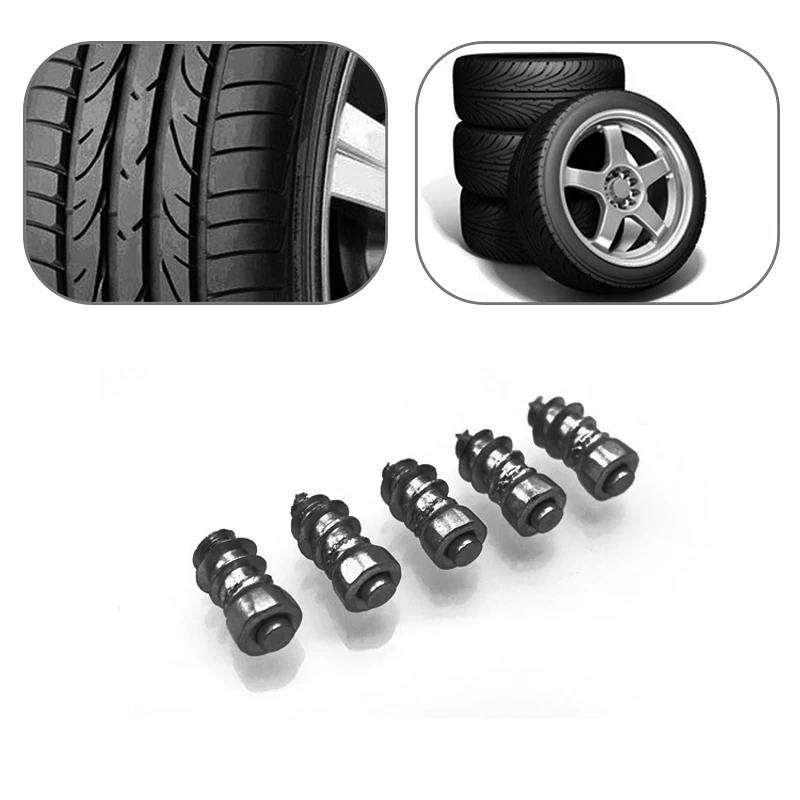 Therefore, in the models of Russian brands, you can find from 130 to 160 metal inserts.
Therefore, in the models of Russian brands, you can find from 130 to 160 metal inserts.
The number of metal inserts ranges from 90 to 190 pieces. The exact quantity is an individual parameter, which is influenced by the design features and the technologies used.
This size is very common among budget cars. On winter tires Nokian Nordman 5 size R13, 110 studs were counted. It is worth noting here that according to generally accepted standards, the number of metal inserts on rubber of this diameter should be up to 90 pieces per wheel, but some manufacturers exceed this figure if it does not harm the road surface.
New cars of domestic production (Grant, Priora and others) are already equipped with R14 wheels, so this size is gradually replacing the 13th diameter. On winter tires Nokian Nordman 4 and 5 also managed to count 110 studs. Cordiant Polar has similar indicators.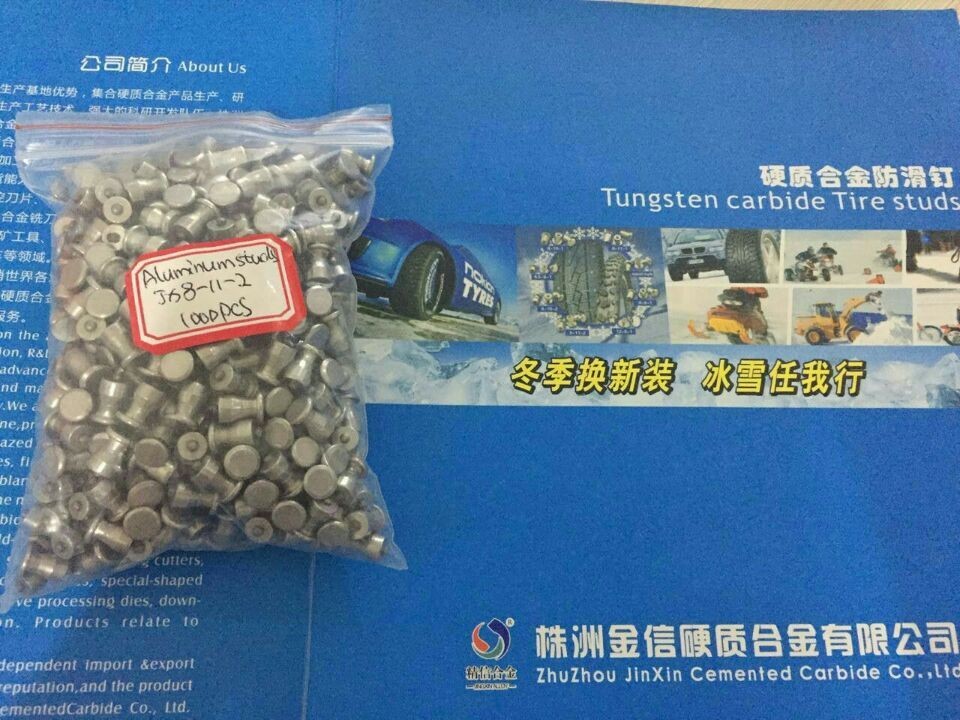 Fewer studs for Gislaved Nord Frost rubber - 90, as it should be by established standards. Nokian Hakkapeliitta 8 - 165 tires became the leader in the number of metal inserts.
Fewer studs for Gislaved Nord Frost rubber - 90, as it should be by established standards. Nokian Hakkapeliitta 8 - 165 tires became the leader in the number of metal inserts.
If we take the same Nokian Nordman 5, you can see that the number of spikes on the rubber does not change with increasing diameter. On the R15, in which budget foreign cars and domestic cars of a complete set are “shoeed”, there are still the same 110 pieces. The tendency to keep the same number of studs is also seen in Cordiant, Bridgestone, Gislaved, KAMA.
This diameter is common among foreign cars of class C. On the Chinese Nexen with a diameter of R16, 108 studs are installed. Nokian Hakkapeliitta 9 has a record number of 172, while Nokian Nordman 4 and Pirelli Ice Zero have 130 each.
This tire is suitable for luxury cars and crossovers.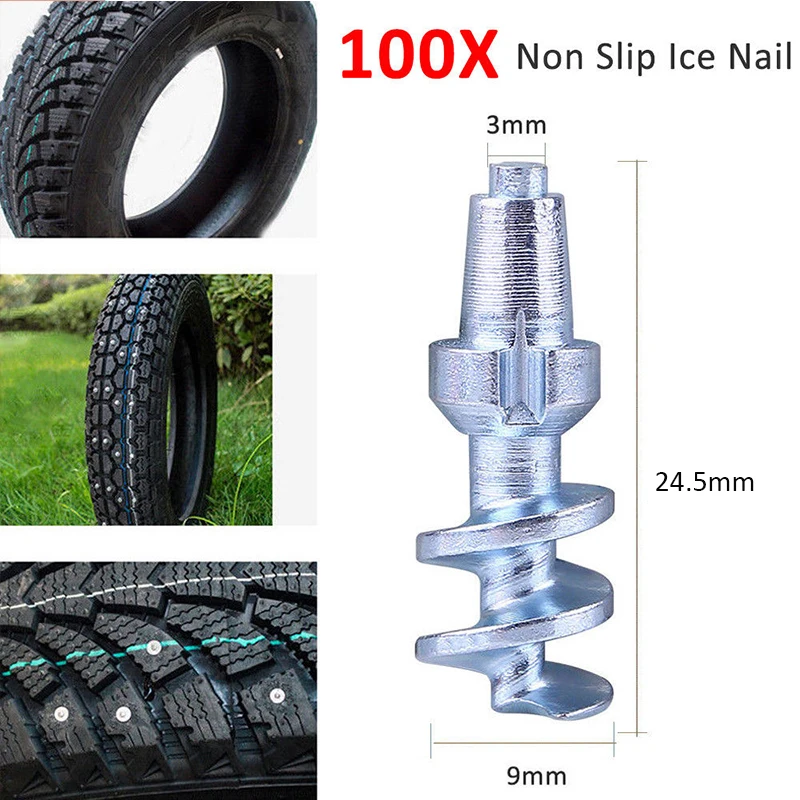 Goodyear has 130 studded 17-inch tires with its UltraGrip Ice Arctic model.
Goodyear has 130 studded 17-inch tires with its UltraGrip Ice Arctic model.
This large size winter tire is used on SUVs and some SUVs. The number of spikes often exceeds 130 pieces. However, there are also models with a limited number. For example, Toyo Tires managed to count 100 spikes.
The average number of studs for rubber of different diameters can be found in this table.
| Wheel size | Number of spikes (pcs) |
| R13 | 90-110 |
| R14 | 90-110 |
| R15 | 110 |
| R16 | 100-180 |
| R17 | 130 |
| R18 | 100-160 |
As can be seen from the review of some popular models, tire size has little to no effect on the number of studs.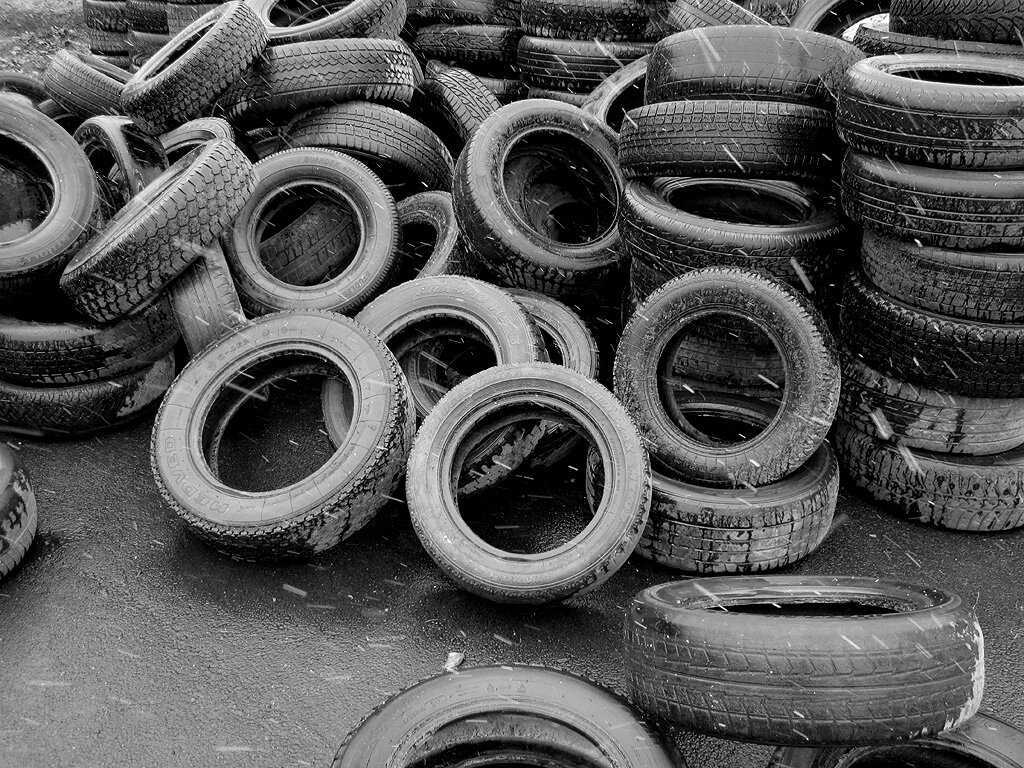
During operation, winter tires may lose their studs. The rate of wear of rubber depends on the quality of the chosen model and the characteristics of the road surface. According to current standards, studded winter tires can be used even if 40% of the metal inserts are retained. When buying tires for the winter, you should pay attention not only to how many studs are in a particular model and what is the level of wear, but also to other important features:
patency;
exchange rate stability;
rubber softness;
stability of characteristics in different weather conditions;
hydroplaning resistance and rapid water drainage.
At the same time, it is worth remembering that studded winter tires are noisier and require running in, which will help extend their life. At the same time, spikes are not always needed for a comfortable and safe ride in winter. If you spend most of your time in a city where the roads are regularly cleaned and sprinkled with reagents, it is more advisable to purchase the so-called Velcro or friction tires. The following video will help you understand the intricacies of choosing between studded and non-studded tires:
With a serious approach, the choice of winter tires for a car is a responsible event that significantly affects the family budget. And if the tires are also studded, then the price of a mistake when choosing increases significantly. Therefore, it is so important to rely on the opinion of experts.
It is worth recalling that winter tires are divided into European and Scandinavian (Arctic): the former are designed for mild winters with frequent thaws and rains, the latter for frost and snowy roads.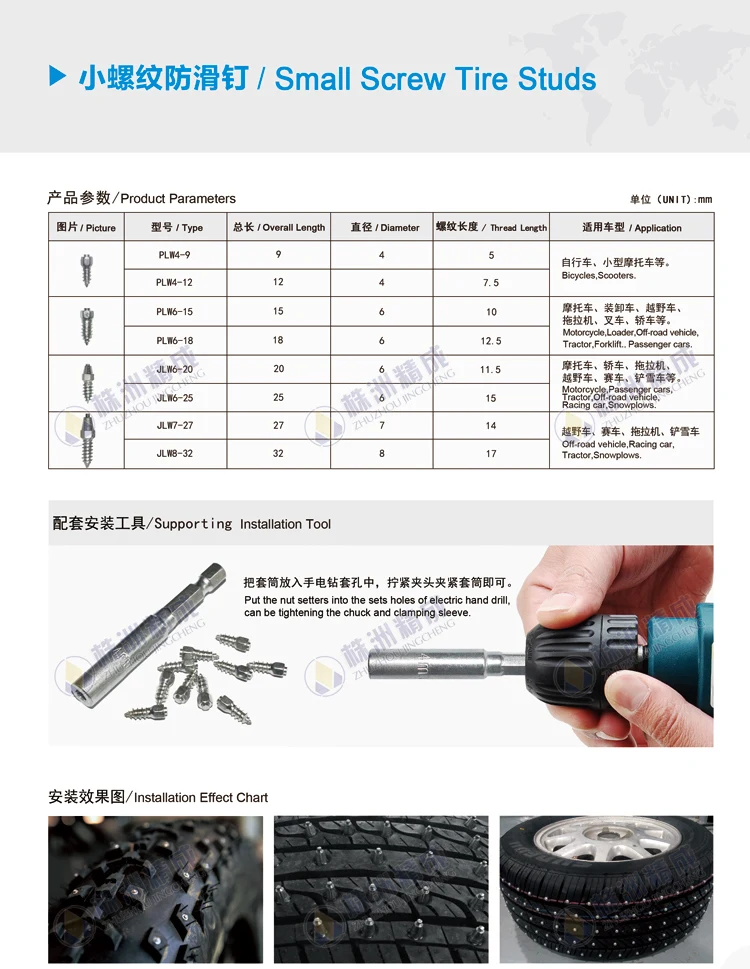 Only tires of the Arctic category can be studded.
Only tires of the Arctic category can be studded.
Winter tires designed for studding have a tread pattern with large blocks without sipes, where there is room for a stud nest. For a better fit, some models have a different rubber compound at different tread depths. At the base of the tread, the rubber is harder, and the surface layer of a studded tire is usually softer than that of a friction tire - this is done for better grip in cold weather. Therefore, studded tires can perform better in the asphalt braking test than their friction counterparts. Although the first ones have a smaller contact patch due to the studs, they often provide a shorter braking distance: softer rubber adheres better to the micro-roughness of the road surface and the car decelerates more efficiently.
❌ A studded tire has its drawbacks:
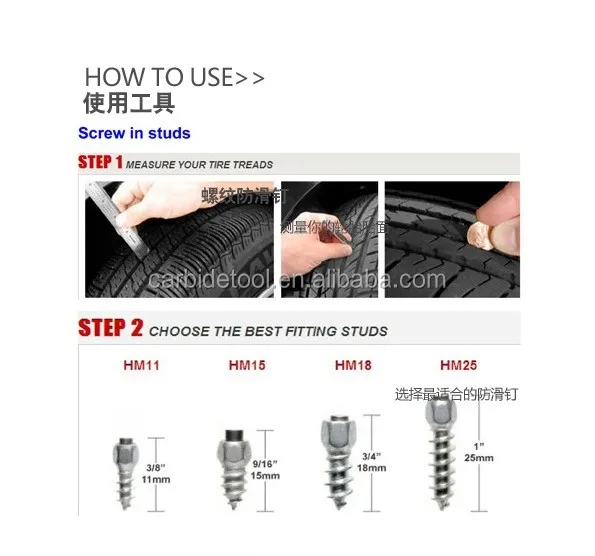
Even a motorist with winter driving experience sometimes asks about winter tires, questions at the level of driving school cadets.
With regard to Ukraine, not quite so. In regions where there is no snow on the roads and the temperature does not drop below zero, friction winter tires will be the best. Yes, the spikes will not particularly interfere, but at above zero temperatures and without snow cooling, they will quickly overheat, "set fire" to the edges of the nest and fly out of it. And what is bad about a tire with empty holes is described below.
Possible, but not necessary. And not only because it will never be possible to stud them correctly. Small pebbles and sand, which are sprinkled on roads in winter, will surely fill empty nests. This will change the softness of the tread, and besides, by bursting the nest, such a “stuffing” gradually destroys the tread blocks.
And not only because it will never be possible to stud them correctly. Small pebbles and sand, which are sprinkled on roads in winter, will surely fill empty nests. This will change the softness of the tread, and besides, by bursting the nest, such a “stuffing” gradually destroys the tread blocks.
Not really. There should not just be a lot of spikes, they should be installed so that they do not follow each other. Otherwise, when braking, ice chips will not be removed from under them and the tire will “float” on it. Correctly installed spikes may be fewer, but they will work more efficiently than randomly "studded" in larger numbers. In addition, in some countries the number of studs per unit of tread length is legally limited.
The short answer is yes, you can. However, much depends on additional factors. And they will be discussed below.
Only specially designed tires are suitable for studding.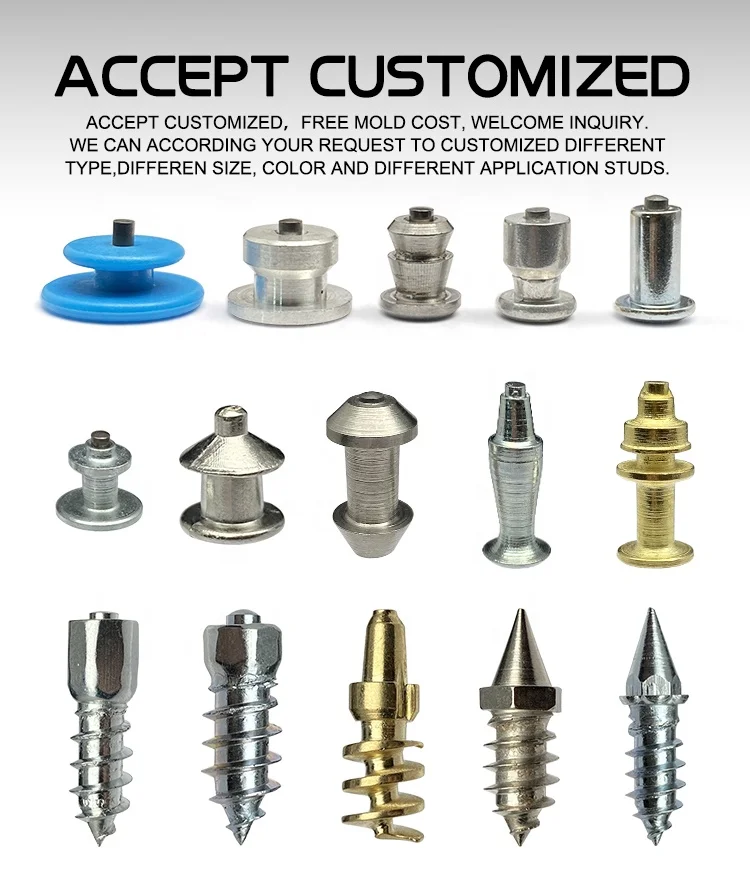 Today, it is no longer possible to find tires without molded holes, and rightly so, because it will not be possible to drill such a drill, even with a tubular drill. For proper studding, it is better to have a special gun that pushes the edges of the nest apart and puts a thorn into it with force.
Today, it is no longer possible to find tires without molded holes, and rightly so, because it will not be possible to drill such a drill, even with a tubular drill. For proper studding, it is better to have a special gun that pushes the edges of the nest apart and puts a thorn into it with force.
There are several conditions for correct studding:
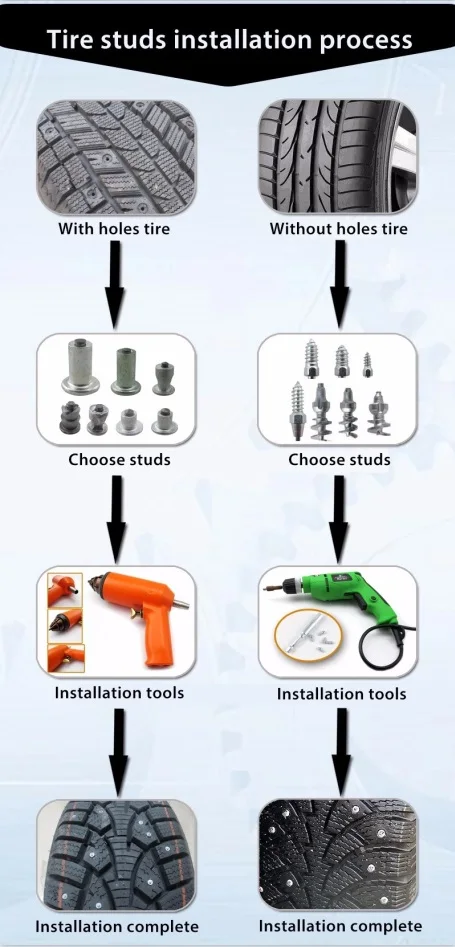
Modern spikes differ from each other in length, number of flanges, shape and material of the body, shape of the carbide insert - core.
Most tire manufacturers use studs with a signature twist, although they all have the same goal: to make the stud as grippy and light as possible. Lighter studs have less impact on the road surface, which means that more can be installed on each tire. Thus, the legislation of those European countries where studs are allowed allows up to 50 studs per meter of tread circumference with a mass of 1.1 g each.
Today aluminum body studs are widely used, the mass of which can be reduced to 0.8 g. Plastic body is rarely used, except in repair studs to increase their diameter.
Most studs have two flanges for better durability, and the bottom one is often not round to prevent the stud from turning. This is necessary for the correct placement of a stud with a complex-shaped core, which must be oriented in the tread in a certain way.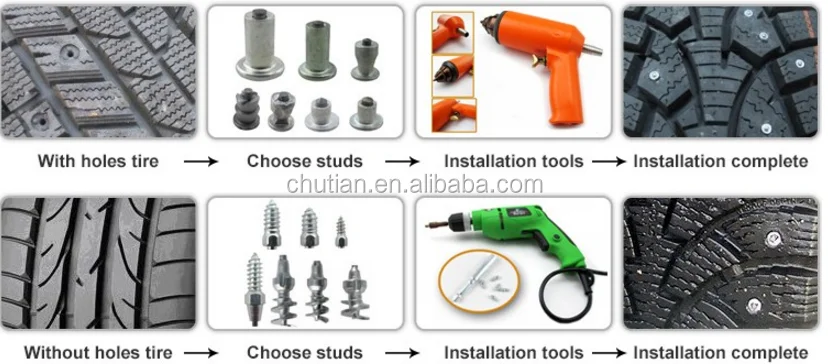
Loss of studs is perhaps the biggest problem that studded tires suffer from. If the number of studs that the tire has lost is so high that it does not have reliable grip, it is worth considering replacing the tire.
However, in some cases the tire studding can be repeated. This makes sense if the tire tread is worn to no more than 5 mm or if the sockets are not heavily worn. But the problem lies precisely in the fact that the spikes are lost precisely because of the wear of the sockets. First of all, their edges are broken, and the diameter of the hole increases to the full depth. In addition, the rubber adjacent to the stud often loses its elasticity due to overheating.
The problem is solved by using larger diameter spikes, they are called repair spikes. The task of the master is to select in each case a repair spike of the required diameter so that it sits tightly in the hole, with the necessary tightness.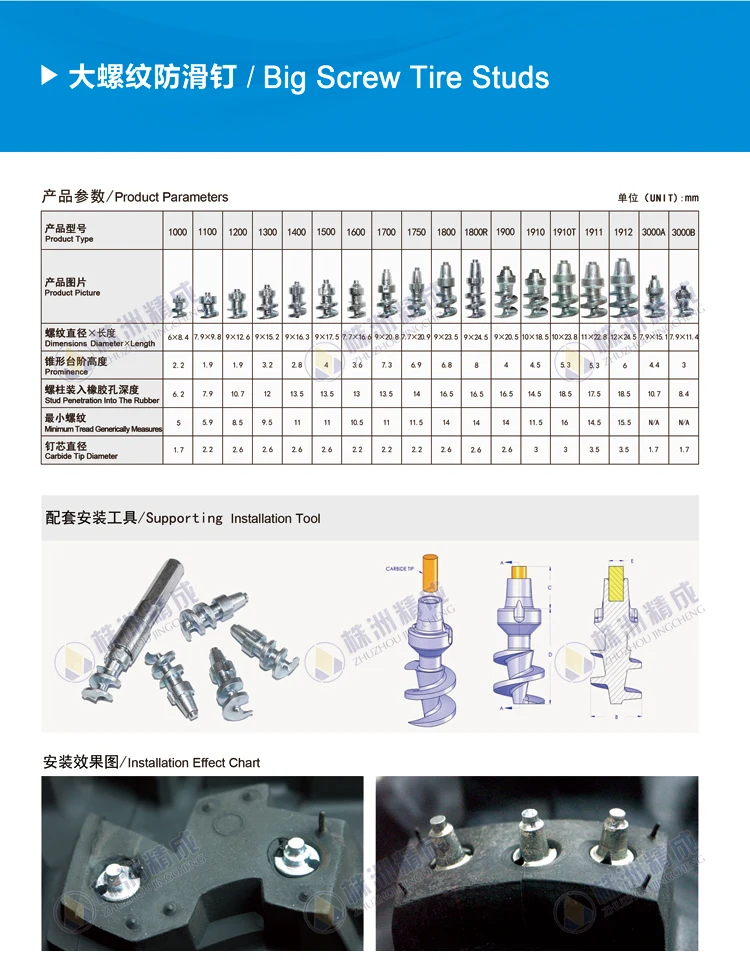
In this case, it is also necessary to select the studs along the length, since the depth of the socket changes: due to the wear of the tread, it decreases, and due to the loosening of the flange at the bottom of the socket, it increases. The length of the spike should be 1 mm more than the depth of its socket. Thus, the success of repair studding also depends on the correct measurement of worn sockets.
Studded winter tires are not a panacea, they do not solve all problems when driving on slippery roads. However, studs significantly improve acceleration, braking and handling on ice and packed snow, especially at temperatures down to minus -20 C.
To better preserve the studs on these tires, do not:
In addition, shorten the "life" of the spikes such techniques as:
